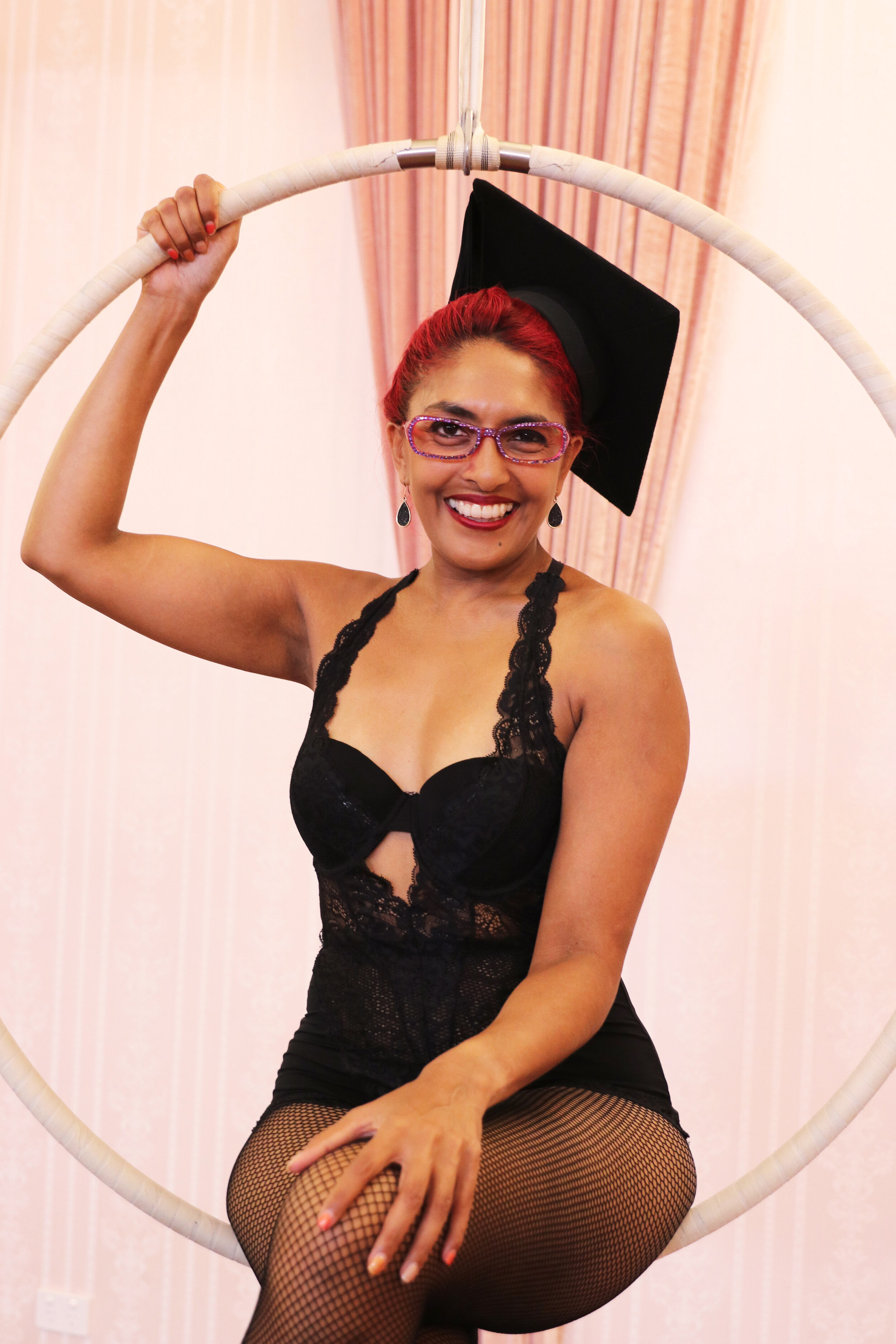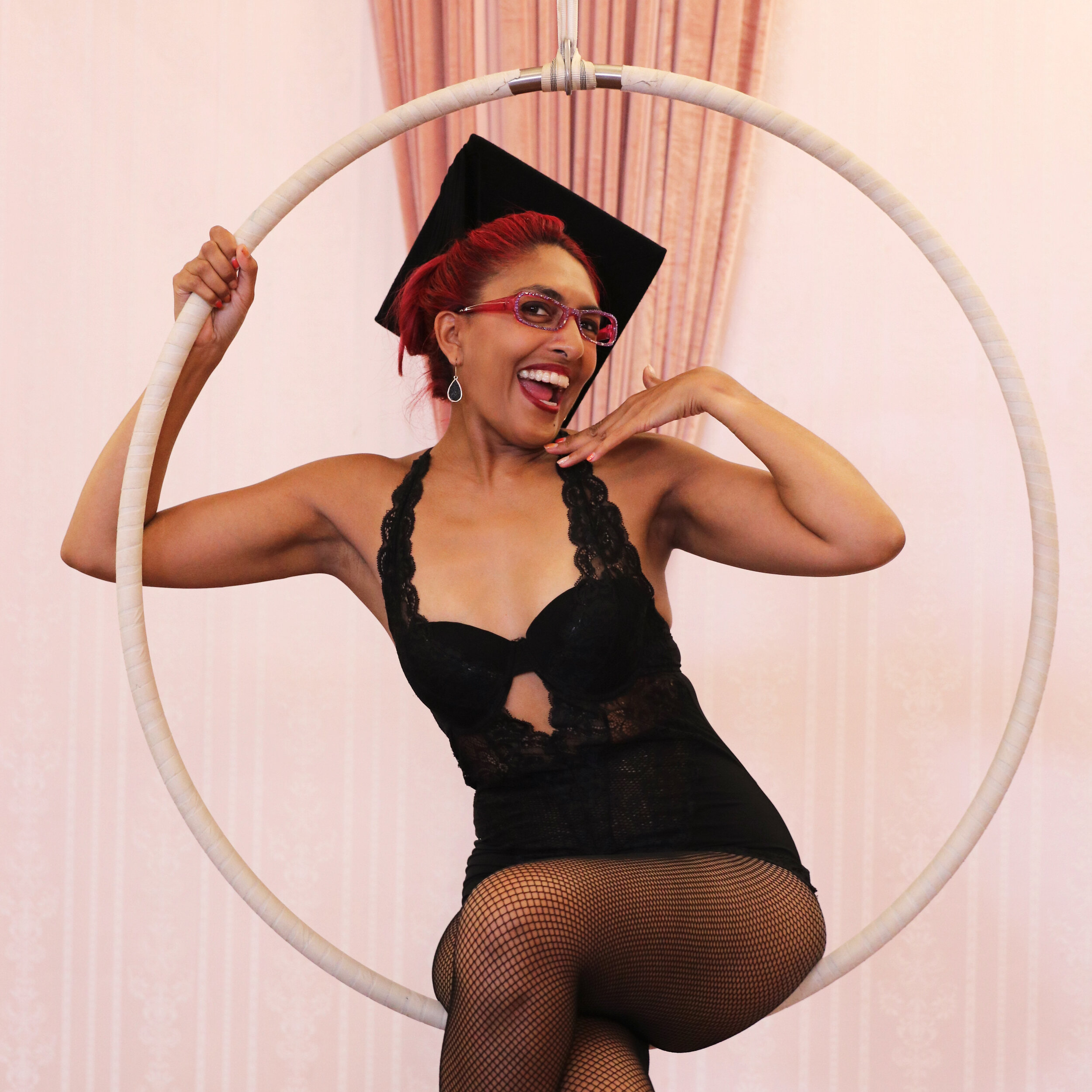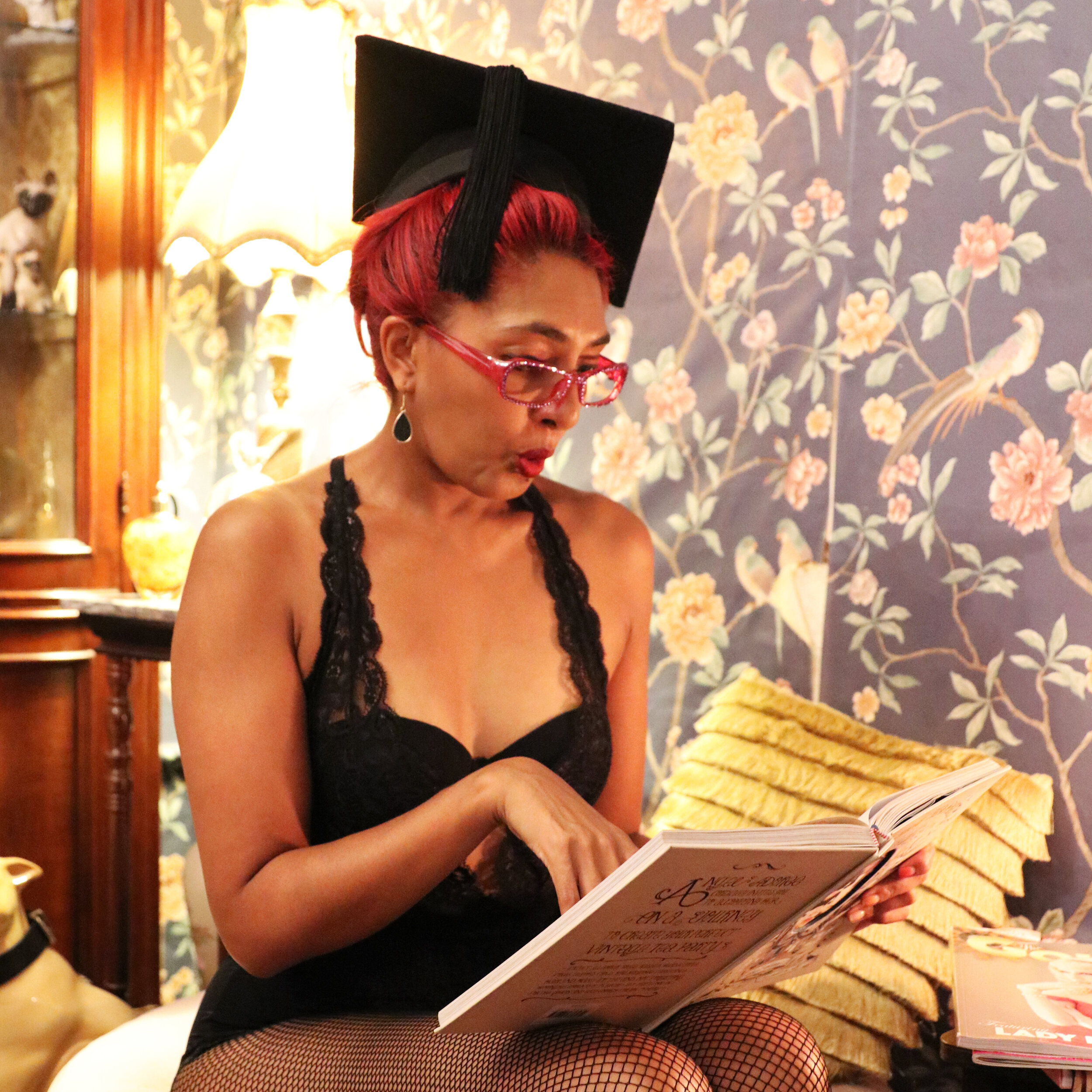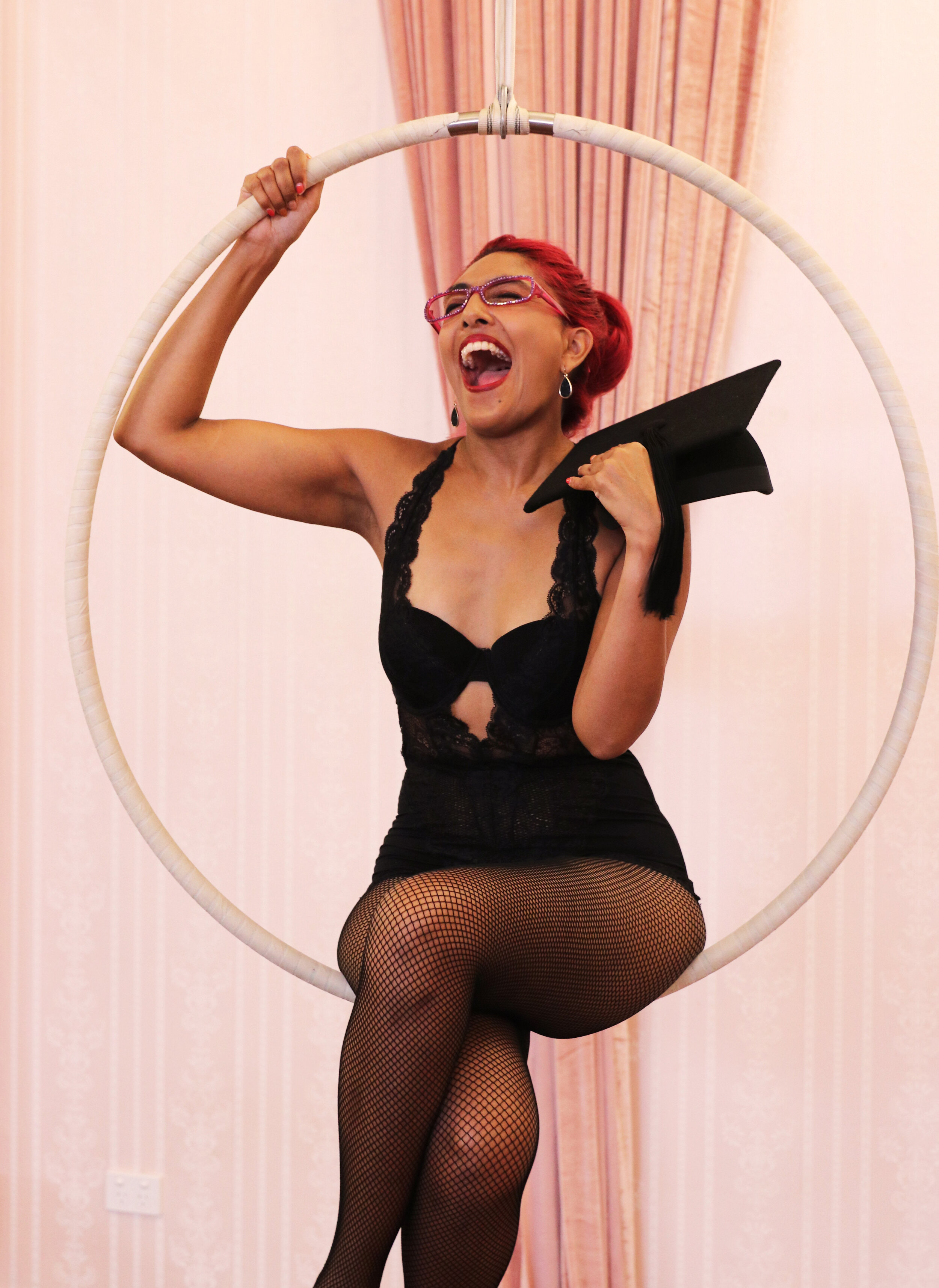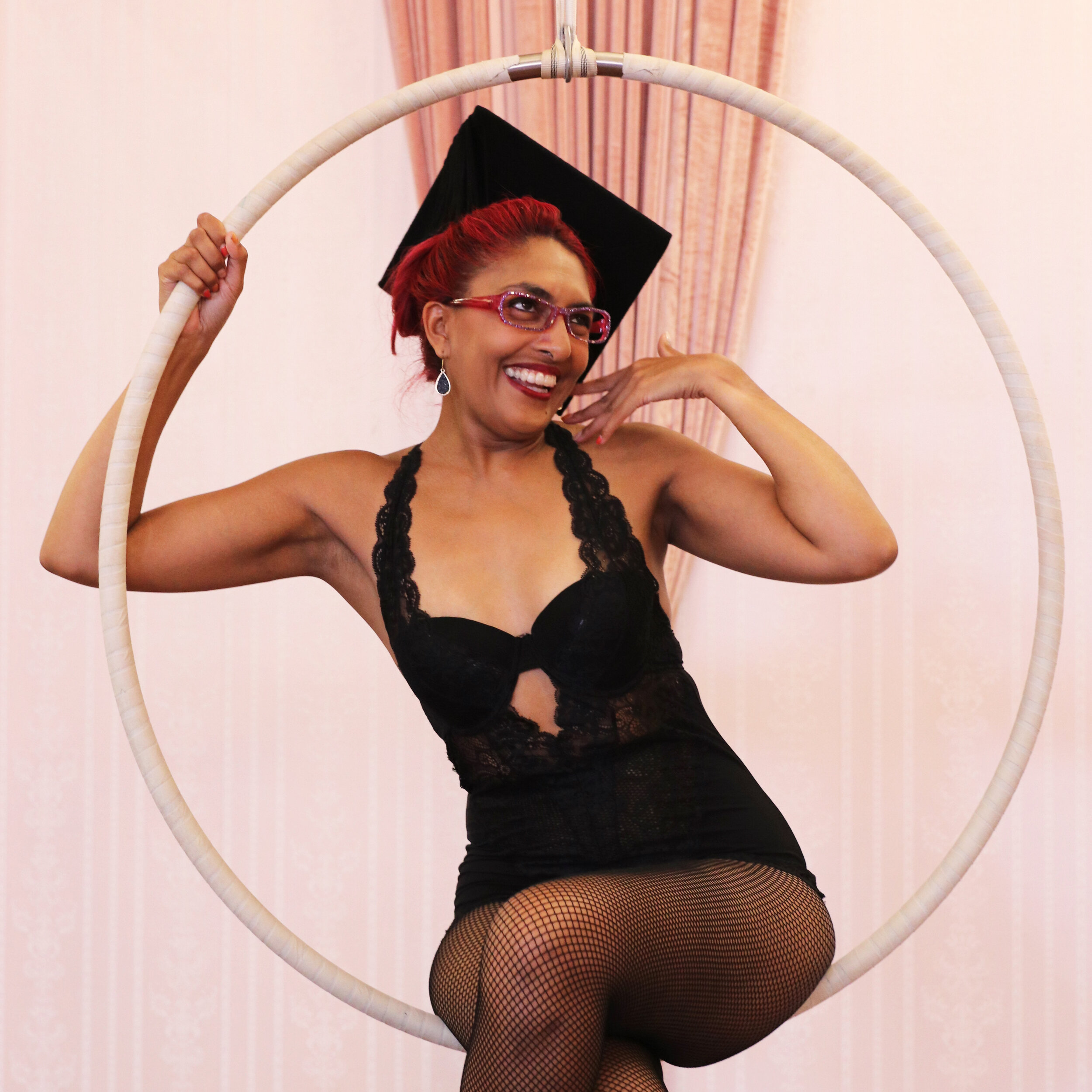Words by Bolly Golightly | Photographs by Katia Schwartz
Bolly Golightly teaches lyra, burlesque and Bollywood dancing, but did you know that she has a PhD and teaches educational psychology? In this article Dr Bolly and friends share some of the science behind what’s going on in your head when you learn burlesque or aerials.
We all know that burlesque and aerials (while being totally badass) have heaps of health benefits. Increased coordination, flexibility, agility with all the benefits of cardiovascular activity make it an almost angelically healthy pursuit. We also know that there are beautiful increases in self-esteem and feelings of belonging when you learn in a supportive community. But over the last 15 years there’s been an explosion of research around the neurological benefits of dance related activities. We now know that your brain is also getting the equivalent of a fully body workout when you come to class.
Why it feels good
“Pleasure double play” sounds like something you might learn in a Velvet Vixens class. According to Columbia University neuroscientist, John Krakauer, it actually means that when you synchronise music and movement you’re being rewarded twice.
The music stimulates the brain’s reward centre and the movement activates the sensory and motor circuits.
That’s why it feels good when we hit those beats or accents, and there’s mounting evidence that there’s more pleasure and reward when we like the tune. Having a tough day in the studio? Give yourself a little reward by putting on your favourite tune and smash out a series of easier moves.
Increased cognitive function
When I started lyra, I spent a lot of time upside down trying to work out where my hands and legs were supposed to go. Of course it got easier with time and practice, but I also noticed that it became easier for me to understand an instructor’s explanation of a new move. Most people become able to acquire new movements more quickly as they progress (although it’s impossible to take the strength factor out of the equation for aerials) and this is due to increased cognitive function. This is a fancy way to say that dance or synchronised movements make you think quicker and in more logical, strategic and creative ways. In studies using PET scans of the brain, scientists found that dance and synchronised movement increases activity in the motor cortex, allowing you to simultaneously plan, control and execute an action in an instant. Activity is also increased in the somatosensory cortex which is responsible for motor control and coordination of movement.
Here’s the magic part… similar studies with musicians suggest that these skills can translate to life outside the studio.
The musicians were able to solve problems more effectively in academic and social settings. Information also transmits more quickly, making you think faster and better, even when you’re not dancing or on the apparatus.
Sky Sirens student Lorelei Rose is a counselling psychologist by training, who focuses on trauma and the body. She also has a diagnosis of Bipolar Disorder with atypical depression and complex PTSD which means she has trouble with affect (mood) regulation and high levels of anxiety- particularly in social situations. Lorelei has been doing lyra on and off for a year, and is about to start burlesque.
Sky Sirens has been transformative.
“I think most people have the intuitive sense that dance is good for mental health and wellbeing. Increasing scientific evidence backs this up, showing that dance has the potential to effect positive change on the brain, mental health, and wellbeing across a diverse range of groups (including in people with Parkinson’s, Alzheimer’s and depression) and can also help with social skills.”
Lorelei’s comments are reinforced by several important pieces of research. In one study by the Albert Einstein College of Medicine, researchers found that dance was the best leisure activity, out of 11 different types, to lower the participants' risk of dementia. This is because dance and spontaneous movement (like freestyling) creates constant split-second, rapid-fire decision making, which makes the brain rewire neural pathways rather than beating the same well-trodden path.
Lorelei adds that one of the keys is finding a supportive environment to allow your brain to experience the benefits.
“I’ve always loved to dance and wanted to learn aerials (and burlesque) for years but I find most classes really challenging. Having such a supportive and understanding place to come and push my body into new shapes around a diverse set of gorgeous humans has been really healing and I’m more confident and stronger in a bunch of ways because of it.”
Research on dance and the brain is a growing field and a lot of the studies have focussed on the positive aspects for the body, sense of community and well-being. There’s very little research on the neuroscience of aerials, with mostly based in related fields like gymnastics, focussing on the mental readiness of athletes. It’s also hard to track the neural pathways of dancers and aerial artists as the brain scan technology doesn’t mix well with movement, so we often look to related research in fields like music.
I’m also personally interested that a lot of the research is carried out by scientists who have little or no experience of dance, pole or aerials, so they’re very much observers who can see, but have never felt the transformative power of these art forms.
This is not universally the case though. US based Pole dancer Dr Kelly Schinke is a tireless advocate for the benefits of pole and aerials. She says “Adrenaline is released during pole dance allowing us to maximize our strength and take our skills to the next level, resulting in a sense of triumph. Subjectively, pole dancing invites us to feel powerful, graceful and attractive. It improves sleep, energy levels, concentration and decision making.”


